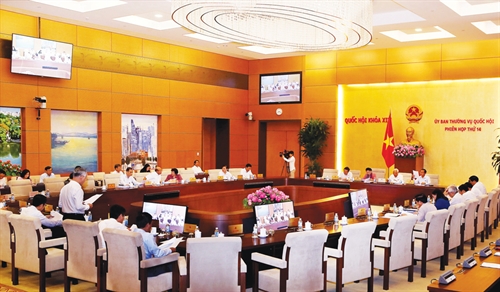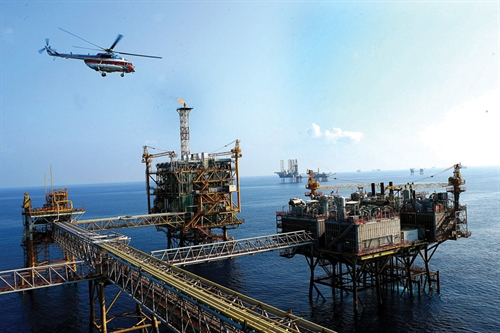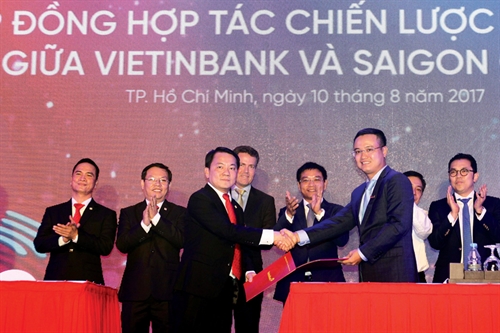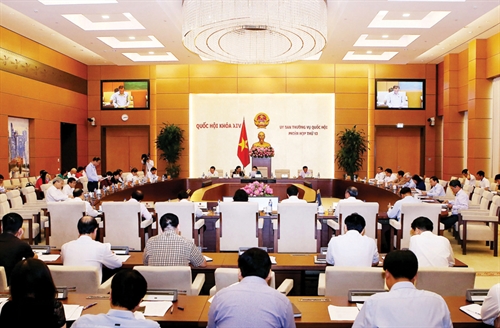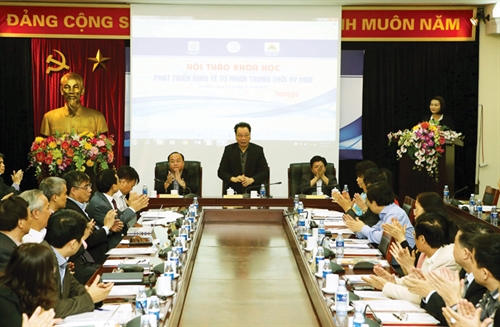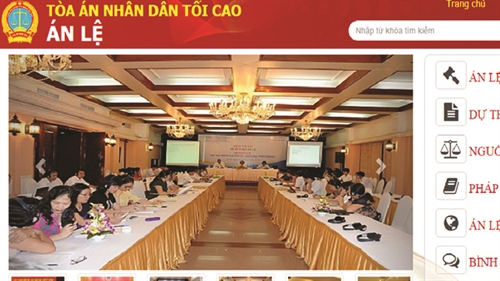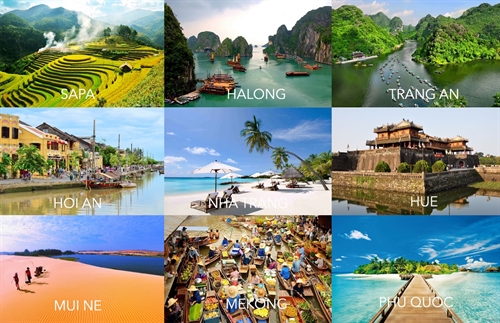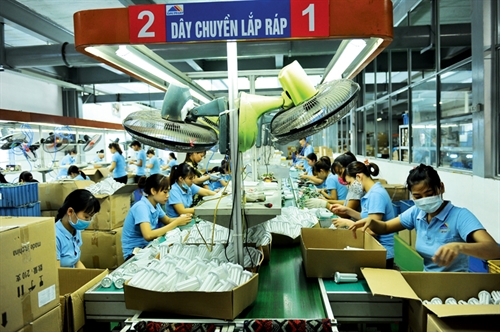Le Thanh Khuyen
Director General
General Department of Land Administration
Ministry of Natural Resources and Environment
Current policies and laws on land accumulation and consolidation
The Vietnamese Party and State have so far adopted numerous policies and laws on the issue.
The 2011-20 socio-economic development strategy passed by the 11th National Party Congress set out the orientation of developing a modern, effective and sustainable agriculture, encouraging land consolidation and development of agricultural farms and enterprises in conformity with conditions of each region.
In October 2012, at its 6th plenum the 11th Party Central Committee adopted Resolution 19 giving the green light for relaxing quotas for agricultural land use right acquisition suitable to specific conditions of each region in each period so as to facilitate land accumulation and consolidation and large-scale commodity agricultural production.
The Political Report presented by the 11th Party Central Committee to the 12th National Party Congress in early 2016 once again called for the development of agriculture and rural economy in association with the building of a new countryside; building of large-scale, hi-tech agriculture. It urged adoption of appropriate policies to accumulate and consolidate land and attract resources for investment in agricultural development and formation of hi-tech agriculture-industry-service complexes.
The Report identified the tasks of bringing into full play the active role of farming households and household economy; determining the core role of enterprises in agriculture and accelerating the restructuring, renewal and improvement of effectiveness of state-run agriculture, forestry and fisheries enterprises; developing new-style cooperatives and diversifying forms of cooperation and association; and forming material zones connected with processing industries and outlets.
In 2013, a new Land Law was passed with many new provisions aimed at accelerating the land accumulation and consolidation.
Regarding rights of agricultural land users, the 2013 Land Law provides that depending on each form of land use, land users may exchange, transfer, lease, sub-lease, bequeath, donate, contribute as capital or mortgage land use rights. This provision is regarded as a legal key to open the door for the accumulation and consolidation of agricultural land for large-scale agricultural production.
The land law also permits the change of use purposes within the group of agricultural land in a more flexible manner under the market mechanism to facilitate land consolidation for agricultural production after the model of farm economy. As per Article 142 of the Land Law, the State encourages households and individuals to develop farm economy as a way of using land more efficiently for agriculture, forestry, aquaculture or salt production in association with services, processing and sale of farm products.
Another substantial revision in the 2013 Land Law is the extension of the term of allocation of agricultural land within set quotas from 20 years to 50 years. Agricultural land, as defined in the Law, includes land under annual crops, land under perennial trees, and forest land.
The Land Law also sets quotas of agricultural land to be allocated without land use levy to households and individuals, which range between 2 and 30 hectares depending on land category and region. This quota is 2-3 hectares for land under annual crops; 10-20 hectares for land under perennial trees; and 30 hectares for forest land with forests.
Meanwhile, agricultural land use rights acquisition quotas applicable to households and individuals are 10 times the above land allocation quotas. Specifically, an organization or individual may acquire the rights to use at most 20-30 hectares of land for annual crop farming, 100-300 hectares of land for perennial tree planting, and 300 hectares of forest land.
As for land used by enterprises, the current land legislation does not impose any quotas, simply stating that the State will allocate or lease land to enterprises depending on their investment projects.
Noteworthily, the 2013 Land Law provides that except cases in which the State recovers land for national defense or security purposes or for socio-economic development in national or public interests, investors may reach agreement to acquire land to implement their investment projects through transfer, lease or receipt of land use rights as capital contribution. The Law assigns the Government to devise policies to encourage the lease of land use rights from, and receipt of land use rights as capital contributed by, economic institutions, households and individuals to implement production and business projects.
At present, Vietnam’s land policies and laws are basically complete and suitable to the socialist-oriented market mechanism. They provide an adequate legal foundation for land users to accumulate and consolidate land on a large scale and feel secure with their investments in land-related activities. Nevertheless, the process of land accumulation and consolidation remains slow. Transactions on the agricultural land use rights market are still modest compared to practical requirements, with transfer deals outnumbering lease deals.
Some problems have been identified in the implementation process:
First, although the land accumulation and consolidation policies aim at developing agriculture, there remains a lack of close and comprehensive connection among agricultural households, cooperatives and enterprises; scientists and technologists; and the market. As a result, agricultural production efficiency remains below expectations.
Second, it is difficult to reach agreement on land prices in land transfer or lease negotiations.
Third, uneven and small, scattered rice fields make their renovation and consolidation costly while funds for this work are insufficient.
Last, as job training and generation for farmers remain ineffective, they see no incentives in transferring their land.
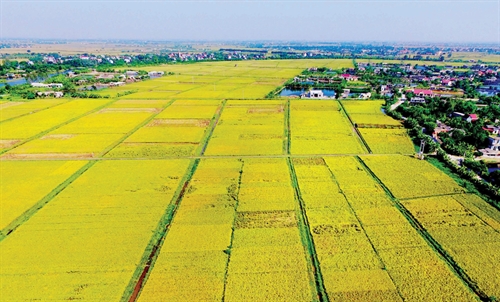 |
| Thanks to land accumulation and consolidation, farmers in Ninh Giang district, Hai Duong province, can achieve higher rice cultivation efficiency__Photo: Phuong Hoa/VNA |
Current state of land accumulation and consolidation
According to statistics obtained from the 2015 General Land Inventory conducted by the General Department of Land Administration, Vietnam now has a total of 27,281,040 hectares of agricultural land, accounting for 82.36 percent of the country’s land area and 88.10 percent of the total land area currently in use. The farming land area managed and used by households and individuals is 15,018,428 hectares, making up 55 percent of the country’s total agricultural land area; economic organizations are using 2,752.614 hectares of agricultural land, equivalent to 10.09 percent; and foreign organizations and individuals are using 45,221 hectares, accounting for 0.14 percent.
At present, land accumulation and consolidation occur in four models.
The first is based on cooperation between enterprises and land users. In this model, enterprises supply materials, saplings, breeds and scientific and technological solutions and purchase the entire output. Farmers continue working on their fields and, instead of working independently, form groups of households in order to consolidate their land areas into large-scale fields, thus facilitating mechanization of farming work and application of new farming techniques.
This model proves quite suitable as it benefits all involved parties, particularly for farmers who still own and work on their land. However, it is farmers who often pose risks to this type of land accumulation. Reality shows that when market prices are higher than the purchase prices under contracts signed with enterprises, farmers likely breach the contracts by selling their products to traders for higher prices.
To address this problem, local administrations should educate farmers to be aware of long-term benefits from their partnership with enterprises. Reality also shows that this model will be successful if associated enterprises are social businesses or cooperatives established by farmers themselves. In the latter case, farmers benefit from the production, supply and sale of input materials and output products while the State needs to provide technical assistance and assist them in selling by-products in order to maximize profits.
Transfer of agricultural land use rights is another way of land accumulation and consolidation.
According to a report on renewal of land policies for agricultural restructuring released by the Institute of Policy and Strategy for Agriculture and Rural Development, 40 percent of agricultural land was acquired through allocation by the State, 34 percent was from inheritance, 12 percent through purchase or auction, while the remainder is reclaimed land or of other origins. The land use right transfer market is now very weak, even declining. Of the total transferred agricultural land areas, 29 percent were transferred before 1994, 41 percent during the 1994-2003 period, and the remaining 30 percent in the period from 2004 to now.
All land use rights transactions now take place in accordance with the market mechanism. The State only plays the role of supervising and managing land-related changes.
In order to speed up land accumulation and consolidation after this model, the State should adopt comprehensive policies such as exemption from income tax, charges and fees for farmers upon transfer of agricultural land use rights and simplification of procedures for registration of land-related changes. The State should also consider imposing progressive tax on unused agricultural land areas so as to ensure efficient land use and prevent land speculation.
If agricultural land use rights transfer quotas are removed, land accumulation and consolidation through land use rights transfer will have great impacts on the society, especially farmers. Thus, the State should adopt policies on investment attraction, agricultural development, market, and job training and employment for farmers.
The third model of land consolidation is renting land from farmers, which has many advantages.
On the part of enterprises, after renting land from farmers, they can decide on their own production activities over a certain period of time based on market demands without having to discuss with farmers. They can also apply technologies to increase productivity and sign contracts on sale and purchase of output products for a given period. Farmers still hold land use rights while earning income higher than agricultural production yields, They also have a chance to work as agricultural workers for land-renting enterprises. Most importantly, land still belongs to farmers when the lease term expires.
However, the implementation of this model is hindered by the fact that sometimes investors could not reach agreement with land users on the lease of their land use rights, especially on a lease term which is long enough for them to effectively invest in building infrastructure on the rented land.
The fourth way of land consolidation is receiving land as capital contributed by land users. Under this model, farmers voluntarily contribute land for and enjoy benefits from production and business activities. Farmers can also contribute land, money and labor to cooperatives, cooperative groups or enterprises and enjoy profits as agreed upon and prescribed by law.
This model has been implemented in Son La province between farmers and Vietnam Rubber Company, in which land is valued to determine the value of capital contributions to the company.
Reality shows that farmers participating in this model will face risks if transparency in corporate governance is lacking and farmers are not allowed to directly participate in production and business activities. When enterprises increase charter capital, the holding rate of farmers will consequently decrease, which poses risks to farmers. It is not to mention that enterprises may fall bankrupt or dissolve. All these possibilities, together with uncertain future benefits, make farmers reluctant to contribute their land.
Therefore, the State should introduce policies to protect farmers participating in this model, such as maintaining their capital contribution rates and protecting and providing them with legal assistance in case enterprises fall bankrupt or dissolve. Besides, enterprises that receive land as capital contribution from farmers should be granted with tax incentives (because farmers directly engaged in agricultural production are exempted from agricultural land use tax).
Upcoming actions
Land accumulation and consolidation serves as an impetus for agricultural and rural development. This important issue needs to be thoroughly considered based on the viewpoints below.
Land accumulation and consolidation must meet the requirements of socio-economic development and national defense and security, and concurrently ensure socio-political stability. Importance should be attached to long-term and sustainable rights and interests of farmers as well as harmony of the interests of people, the State and businesses.
Agricultural land areas must be rationally allocated and efficiently used; land areas for agricultural cultivation must be protected and improved in quality; the change of the use purpose of land for rice cultivation and forest land must be closely controlled for the sake of immediate as well as long-term interests; the eco-environment must be protected to meet sustainable development requirements.
The State should adopt suitable policies to ensure the most efficient use of agricultural land.
At the same time, it is necessary to strongly develop the market for agricultural land use rights and to use land use tax as a tool to prevent speculation, non-use or inefficient use of agricultural land.
Stemming from the above viewpoints, the following tasks and solutions should be performed in the coming time:
Firstly, land policies and laws should be further renewed and improved to accelerate land accumulation and consolidation for developing a hi-tech, large-scale agriculture.
Specifically, the quality of forecasts should be improved to ensure the stability of land use master plans and relevant master plans. Master plans on processing industry zones and clusters should be linked and synchronized with those on material production zones.
Long-term forecasts and strategic orientations on macro-economy and domestic, regional and world markets should be worked out.
Sanctions should be tightened to severely handle violations of the regulations on adjustment, removal and publicization of land use master plans and plans.
The 2013 Land Law has relaxed quotas for acquisition of agricultural land areas: 30 hectares for land under annual trees, land for aquaculture and land for salt making in provinces and centrally run cities in the southeastern region and Mekong River delta, and 20 hectares in other provinces and cities; 100 hectares for land under perennial trees in plain communes, wards and townships and 300 hectares for such land in midland and mountainous communes, wards and townships. For land with planted production forests these quotas are 150 hectares and 300 hectares.
The above quotas are set to control the process of land accumulation in tandem with the rural labor restructuring and ensure the size of land areas that farmers can efficiently manage and use.
The Land Law does not impose any limits on households and individuals accumulating land through renting land or receiving land as capital contribution from land users, and on enterprises accumulating land for carrying out production activities.
With respect to the land access right, to attract investment in the construction of infrastructure of hi-tech agricultural zones, land for construction and commercial operation of infrastructure of these zones should be added to the cases in which the State will be responsible for recovering land specified in Article 62 of the Land Law.
To protect land for rice cultivation, the current land law not only establishes a strict process of seeking approval of change of the use purpose of such land but also limits the transferees of the right to use such land (the law does not permit economic organizations and households and individuals not directly engaged in agricultural production to receive the transfer of land for rice cultivation). If this limitation is lifted, as proposed by some experts, the State should adopt policies on job change and creation for farmers, sci-tech application and product sale, etc., in order to ensure social stability as well as efficient agricultural production.
The State should also improve land use tax policies to ensure that land accumulation actually serves agricultural production and prevent land speculation.
Secondly, the above-said models of land accumulation and consolidation should be evaluated socio-economically and environmentally in order to come up with appropriate measures to promote their implementation.
Thirdly, the operation mechanism of the land use rights market should be improved, focusing on: (i) making transparent and modernizing market information; (ii) reviewing and improving regulations on the rights of land users, such as the rights to swap, transfer, and contribute as capital or mortgage land use rights or land-attached assets; (iii) adding mechanisms for dealing with cases in which land users refuse to transfer, lease or contribute as capital land use rights for implementing agricultural production projects; and (iv) issuing policies to encourage the rent of land use rights or receipt of land use rights as capital contribution for implementing agricultural production projects.
Lastly, the State should establish a mechanism for creating land funds to develop large-scale agriculture. In the immediate future, land banks should be set up on the basis of reorganizing local land fund development centers. These banks can operate as public non-business units under provincial-level People’s Committees or Departments of Natural Resources and Environment. In addition, foreign experiences on the establishment of land banks should also be studied.-
